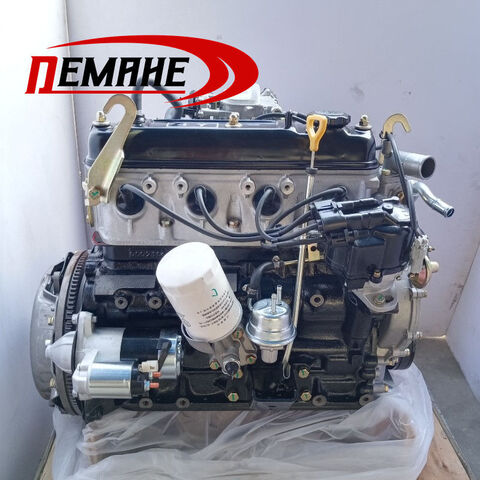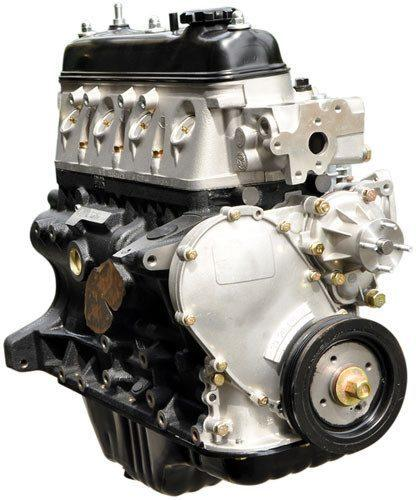The History and Evolution of the 4Y Engine in Automotive Engineering
The History and Evolution of the 4Y Engine in Automotive Engineering
Blog Article
Why the Engine Is the Ideal Option for Efficiency and Effectiveness in Your Vehicle
The engine continues to be a pivotal component in vehicle design, mainly as a result of its considerable impact on both performance and performance. As developments in technology allow smaller sized engines to deliver exceptional power while maximizing fuel economic situation, the integration of features such as turbocharging and crossbreed systems comes to be increasingly important. These technologies not only improve driving experience however additionally address environmental problems. Nevertheless, the inquiry arises: exactly how do these aspects integrate to redefine our understanding of automotive performance? Discovering this equilibrium discloses deeper insights into the future of engine layout.
Understanding Engine Types
Understanding the various types of engines is important for enhancing performance and effectiveness in automobile layout. The primary engine kinds consist of inner burning engines (ICE), electric engines, and crossbreed systems, each offering distinct benefits and constraints.
Interior burning engines, which can be further classified into fuel and diesel variations, depend on the burning of fuel to generate power. Gasoline engines commonly give greater RPMs and much better acceleration, while diesel motor are recognized for their torque and fuel efficiency, making them perfect for heavy-duty applications.
Electric engines, on the various other hand, utilize electrical motors powered by batteries or fuel cells. They offer rapid torque shipment, resulting in smooth velocity and lower emissions. The performance of electrical engines is significantly greater than that of ICEs, making them a prominent choice for eco-conscious customers.
Hybrid systems incorporate both interior burning and electric engines, leveraging the toughness of both innovations. They optimize gas consumption by utilizing electric power at reduced speeds and changing to gasoline or diesel for greater rates or much heavier loads.
Picking the best engine kind is vital for attaining preferred efficiency metrics and environmental sustainability in modern vehicle engineering.
The Effect of Engine Dimension
Engine size often plays a pivotal duty in determining an automobile's performance and performance. Usually measured in litres or cubic centimeters, engine dimension directly influences the power output and torque qualities of a vehicle.
Nonetheless, enhanced engine dimension commonly associates with decreased fuel performance. Smaller engines can provide adequate efficiency for day-to-day driving while promoting much better performance, making them a popular selection in mid-size and small automobiles.
Furthermore, developments in engine style, such as turbocharging and direct gas shot, allow smaller engines to achieve power degrees similar to their bigger counterparts. This pattern stresses the significance of not entirely concentrating on engine size but also taking into consideration total lorry style and technology (4y engine). Ultimately, the impact of engine size on efficiency and performance highlights the need for consumers to examine their specific driving demands and choices when choosing an automobile
Advanced Engine Technologies
Advancements in engine technologies have significantly reshaped the landscape of automotive efficiency and efficiency, structure upon the fundamental ideas developed by engine size. Significantly, innovations such as turbocharging and direct gas shot have allowed smaller engines to deliver power levels previously related to larger counterparts. Turbochargers compress air going into the engine, enabling for increased power output without an equivalent boost in engine size, while direct injection enhances gas delivery, improving combustion effectiveness.
Furthermore, variable shutoff timing systems have actually become an important modern technology, permitting engines to readjust valve procedure based upon driving problems. This adaptability enhances both efficiency during velocity and gas performance throughout cruising. Hybrid and electric engine innovations additionally illustrate the shift in automotive design, integrating standard inner combustion engines with electrical motors to make best use of performance while reducing exhausts.
Furthermore, developments in materials science have actually caused lighter, a lot more resilient navigate to this website engine parts, further enhancing efficiency and durability. The combination of innovative electronics and engine control units additionally enables real-time changes, making certain ideal efficiency throughout numerous conditions. Jointly, these innovative engine modern technologies not only enhance car performance yet likewise add to a more sustainable automobile future, demonstrating the recurring evolution of engine style.
Harmonizing Power and Effectiveness
Striking a balance between power and performance is critical in modern automotive style as suppliers look for to fulfill progressively rigorous emissions regulations while satisfying customer demand for efficiency (4y engine). The difficulty lies in maximizing engine characteristics to supply robust power output without compromising gas economic situation
To attain this equilibrium, engineers utilize numerous methods, such as turbocharging, which boosts engine power forcibly in more air, permitting a smaller wikipedia reference engine displacement that enhances fuel efficiency. Variable valve timing innovations also play a significant duty, making it possible for engines to readjust their efficiency attributes based upon driving conditions, therefore improving both power and effectiveness.
Moreover, advancements in materials and producing techniques have brought about lighter engine components, which reduce general automobile weight and improve gas performance without endangering power. Crossbreed technologies have actually additionally emerged as a sensible service, incorporating traditional inner burning engines with electrical powertrains to offer an increase in performance while preserving lower exhausts.

Future Trends in Engine Style

Furthermore, the development of advanced products, such as high-strength alloys and light-weight compounds, is readied to reinvent engine components. These materials not just reduce weight but also improve thermal efficiency, therefore optimizing performance. Additionally, makers are exploring variable compression proportions, allowing engines to adjust to different driving problems, enhancing both power outcome and gas economy.
Further, the increase of fabricated knowledge and artificial intelligence in engine layout is making it possible for anticipating maintenance and real-time performance optimization. This technology can result in engines that self-adjust for maximum efficiency based on driving patterns.

Verdict
In final thought, the engine offers as a click here for info critical part in attaining optimal performance and performance in contemporary lorries. The interplay in between engine dimension and layout continues to progress, driving technologies that stabilize thrilling efficiency with ecological sustainability.
In addition, developments in engine style, such as turbocharging and direct fuel shot, permit smaller engines to attain power degrees comparable to their larger equivalents.Advancements in engine innovations have dramatically improved the landscape of automobile performance and performance, building upon the foundational principles developed by engine size. Turbochargers press air getting in the engine, permitting for enhanced power result without a matching rise in engine size, while straight injection enhances gas delivery, improving combustion performance.
Crossbreed and electrical engine innovations further highlight the shift in auto style, combining conventional inner combustion engines with electrical motors to optimize efficiency while minimizing exhausts.
Collectively, these advanced engine innovations not just enhance automobile performance however likewise add to a much more lasting auto future, showing the recurring advancement of engine style. (4y engine)
Report this page